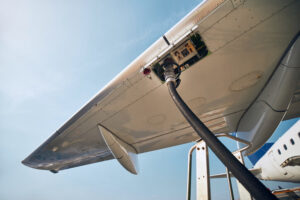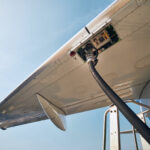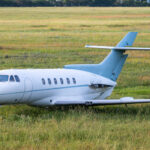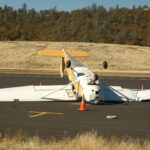TAWS Definition
The Terrain Avoidance and Warning System (TAWS) provides the flight crew with sufficient information and alerting to detect a potentially hazardous situation so the crew can take effective action to prevent a Controlled Flight into Terrain (CFIT) event. It is a crucial technology that helps pilots navigate through challenging terrains, identify potential obstacles and reduce the risk of accidents.
TAWS Background
TAWS uses databases and onboard sensors to calculate the position of the aircraft relative to surrounding terrain. It then provides real-time alerts to the pilot, warning of any potential danger. The TAWS system is especially critical during periods of low visibility, such as fog, precipitation, or flights during darkness. Modern TAWS units improve upon the functionality of the older units by providing earlier aural and visual warnings, allowing the pilots more time to make corrections and avoid impact with the terrain.
Functions Provided by TAWS
1. Terrain Proximity Warning
This is the basic warning component of TAWS. It alerts the pilots if the aircraft is within a predetermined range that may lead to impact with terrain. The system considers the altitude, speed, and rate of descent to calculate potential hazards. It also includes the current flight path, descent rate, and obstacle clearance altitudes required by the regulations.
2. Enhanced Ground Proximity Warning System (EGPWS)
This is an advanced version of the basic Terrain Proximity Warning mode. The enhanced system uses additional data sources, such as a worldwide terrain and obstacle database, advanced algorithms and aircraft performance data. This helps to provide a higher level of accuracy and more timely warnings.
3. Look-Ahead Terrain Avoidance (LTA) Function
This function is available in the most advanced TAWS systems. It uses forward-looking sensors and predictive algorithms to provide an even higher level of situational awareness for the pilots. This helps them adjust their flight plans and take appropriate actions well in advance of any danger.
Classes of Equipment
TAWS equipment is classified as either Class A, B or C. Class A is required for all but the smallest of commercial air transport aircraft, Class B is required for larger general Aviation aircraft and Class C is recommended, but not required, for smaller general aviation airplanes.
- Class A provides indications of imminent ground contact in the following conditions:
- Excessive rates of descent. o Excessive closure rate to terrain. o Negative climb rate or altitude loss after takeoff. o Flight into terrain when not in landing configuration.
- Excessive downward deviation from an Instrument Landing System (ILS) glideslope alert.
- Voice callout “five hundred” when the aircraft descends to 5000’ above the terrain or nearest runway elevation.
- Class B must provide indications of imminent ground contact during the following conditions:
- Excessive rate of descent.
- Negative climb rate or altitude loss after takeoff.
- A voice callout “500” when the aircraft reaches 500 feet above the nearest runway elevation.
- Premature descent.
- Imminent terrain impact.
- Reduced required terrain clearance.
- Class C defines voluntary equipment intended for small general aviation aircraft that are not required to install Class B equipment. This was developed to make voluntary TAWS usage easier for small aircraft.
Response to TAWS Warning
There are two response indications related to the TAWS system – a hard warning or a soft alert. The hard warning indicates a dangerous situation that requires an immediate response. A soft alert means the aircraft is in an abnormal situation relating to terrain that demands prompt review and the possibility of a change in flight path or aircraft configuration. Professional flight crews should immediately follow the TAWS response procedures created for their specific aircraft type within their company manuals.
Conclusion
TAWS is a critically important tool for the safety of modern aviation. Advancements in technology are providing real time warnings that we need to make instantaneous decisions and take immediate action to eliminate Controlled Flight into Terrain (CFIT) accidents in the future.









